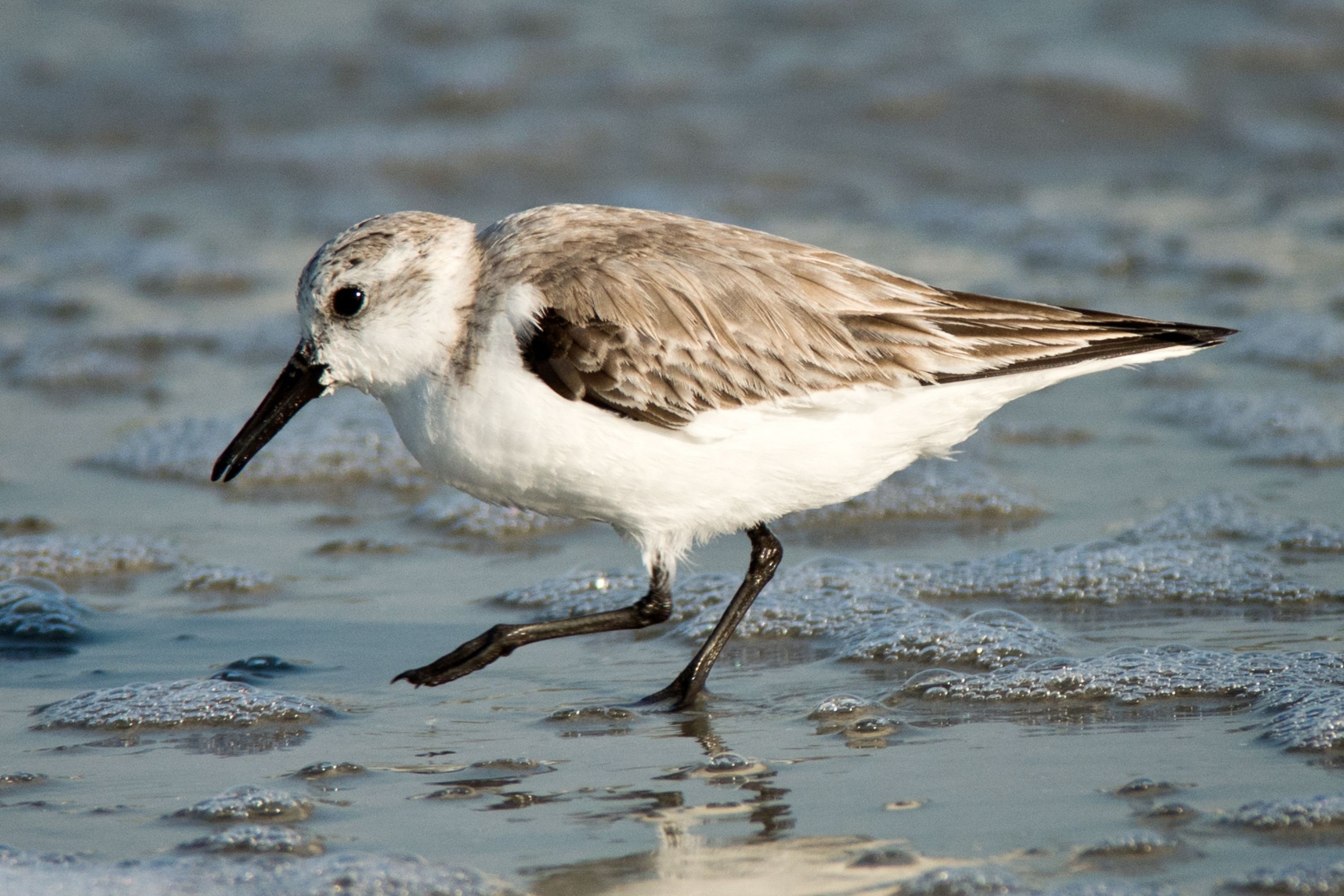Sanderling
(Calidris alba)

Description
Calidris alba, also known as the Sanderling, is a small migratory shorebird belonging to the sandpiper family. These small birds are often seen darting in and out of the waves along the shorelines of beaches and coastal areas worldwide. This article provides a detailed description of the Calidris alba species, including its physical characteristics, behavior, habitat, diet, and conservation status. Physical Characteristics The Calidris alba is a small bird, measuring between 7-8 inches in length, with a wingspan of 14-16 inches. It has a short, straight bill, a white belly, and a grayish-brown back. During the breeding season, the bird's plumage becomes brighter, with a rusty-colored back and a black patch on the breast. In non-breeding plumage, the bird's head and neck are white, and the breast and sides are pale gray. The Sanderling's legs are black, and its feet are webbed, a feature that allows it to move quickly along the shoreline and dig for food in the sand. Behavior The Calidris alba is a highly social bird that travels in large flocks during migration and foraging. They are known for their fast and nimble movements, running back and forth along the shoreline, following the waves, and probing the sand with their bills for food. They are also known to wade in shallow water to catch small invertebrates such as crustaceans, mollusks, and insects. During the breeding season, Calidris alba forms monogamous pairs and nests in the Arctic tundra. The male performs a courtship display, including wing flapping, vocalization, and chasing. After mating, the female lays four eggs in a shallow scrape in the ground lined with vegetation and feathers. Habitat The Calidris alba has a circumpolar breeding distribution, nesting in the Arctic tundra from Alaska to Greenland, and across northern Eurasia. During the non-breeding season, the bird migrates to warmer areas, including the coasts of North America, South America, Africa, Europe, and Asia. The Sanderling can be found along sandy beaches, tidal flats, and mudflats, both on the open coast and in estuaries. It prefers areas with a mixture of sand and shell fragments, which are ideal for digging and finding food. Diet The Calidris alba is a carnivorous bird that feeds on small invertebrates, including crustaceans, mollusks, and insects. It uses its bill to probe the sand, looking for prey, and runs along the shoreline, following the waves, to catch fleeing invertebrates. The Sanderling also wades in shallow water, using its webbed feet to disturb the substrate and flush out prey. Conservation Status The Calidris alba is a widespread species with a global population of approximately 700,000 individuals. While the species is not considered globally threatened, populations in some areas are declining due to habitat loss, disturbance, and hunting. In North America, the Sanderling is protected by the Migratory Bird Treaty Act, which prohibits the hunting, killing, capturing, or selling of migratory birds. In addition, the species is listed as a species of "Least Concern" on the International Union for Conservation of Nature (IUCN) Red List. Conclusion In conclusion, the Calidris alba, or Sanderling, is a small migratory shorebird that is found along sandy beaches, tidal flats, and mudflats worldwide. The bird has a circumpolar breeding distribution, nesting in the Arctic tundra, and migrating to warmer areas during the non-breeding seasons.
Taxonomic tree:







